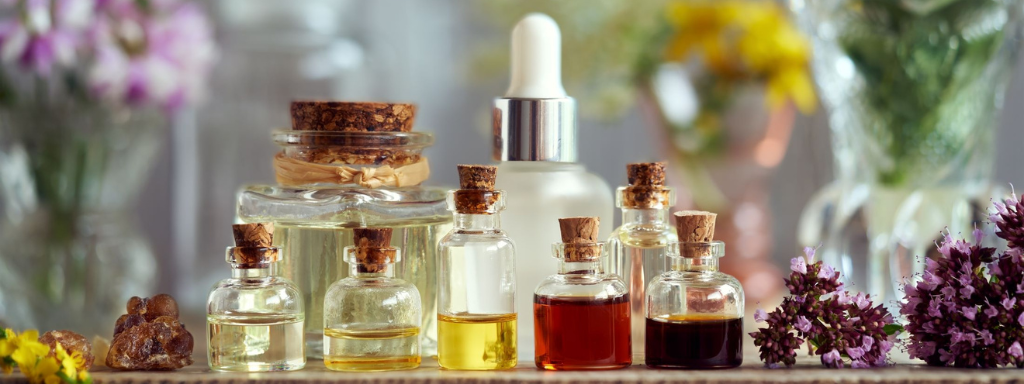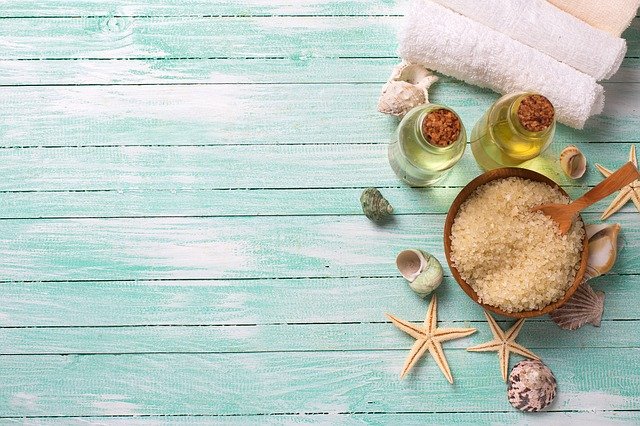
WHAT IS AROMATHERAPY?
Aromatherapy is defined as the use of essential oils for therapeutic purposes.
In massage therapy, aromatherapy is sometimes used to reinforce certain effects of a treatment. Indeed, essential oils are associated with various therapeutic virtues. For example, they can help reduce stress and anxiety, relieve pain and stimulate the immune system.
A FEW WORDS ABOUT ESSENTIAL OILS
Essential oils are extracted from aromatic plants. To produce them, several parts of the plant can be used, for example the leaves, seeds, stems or roots.
Each essential oil is unique and contains many active elements – sometimes several hundred – which give it various therapeutic properties. Depending on the essential oil chosen, the effects can be stimulating or soothing, decongestant or analgesic.
Contrary to popular belief, essential oils are not fatty. In fact, they do not contain any fat. They are, however, volatile and highly concentrated. Some can even be toxic if ingested or applied directly to the skin without dilution.
Aromatherapy can be used in different ways*:
- Externally – Essential oils are mixed with a massage oil, cream or ointment. The mixture is then applied directly to the skin to produce its therapeutic effect.
- In the air – A diffuser is used and a few drops of essential oils are placed on the diffuser. The active molecules will then spread into the air and stimulate the olfactory receptors in the nose.
- Internally: Essential oils can be combined with food (e.g. breadcrumbs, honey) which can then be consumed.
*In massage therapy, only the external and air routes are used. Since essential oils are concentrated and can be toxic, special attention must be paid to the instructions for use and the directions for use on the product bottle.

WHAT ARE THE BENEFITS OF AROMATHERAPY?
The benefits of aromatherapy depend on the essential oil used. For example, lavender essential oil promotes sleep and calms anxiety, while peppermint oil helps relieve muscle pain. In combination with massage therapy, aromatherapy is said to enhance the effect of touch (synergistic effect).
Some of the benefits associated with aromatherapy include
- Reduction of stress and anxiety
- Feeling of well-being
- Better sleep
- Pain relief
- Relief from side effects that may result from cancer treatment (e.g., nausea)
CONTRAINDICATIONS
Because it uses highly concentrated essential oils, aromatherapy may be dangerous for some people. Among others, the approach should be avoided by children under 10 years of age and by pregnant or breastfeeding women.
Precautions should also be taken depending on the essential oil used. For example, some can irritate the skin. Others have allergenic or photosensitising properties, i.e. they increase the skin’s sensitivity when exposed to the sun. Still others could be dangerous for those suffering from chronic diseases, such as diabetes, hypertension or epilepsy.
During a massage, the massage therapist always collects information from the client before beginning the treatment. This information is used to identify any contraindications to the massage and to the use of aromatherapy.
COURSE OF THE SESSION
The massage therapist who uses aromatherapy will target the essential oil(s) to be used during the treatment according to the therapeutic properties associated with each. The essential oils will then be diffused or added to the massage oil to produce their effect.
SOME ESSENTIAL OILS AND THEIR USE IN MASSAGE THERAPY
- Lavender: soothes, calms, promotes sleep
- Chamomile: soothes, relieves sore muscles
- Eucalyptus: relaxes muscles, has antiseptic and healing properties
- Rosemary: relieves muscle and joint pain, soothes, calms
- Peppermint: relieves muscle pain, has a stimulating effect

